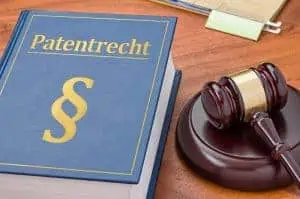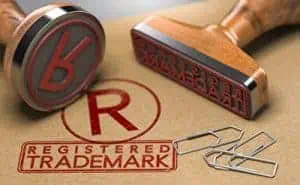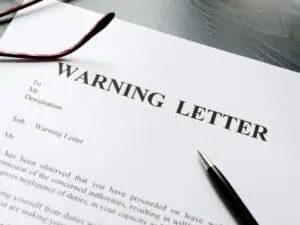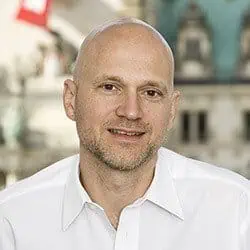Industrial property rights - legally protecting innovative ideas
Whether unusual designs, intelligent patents or memorable brand names - many ideas have economic value and can be the basis for success in international competition. In order to be able to defend yourself against imitators, legal protection is essential.
The following article explains which industrial property rights are the right ones for your project.
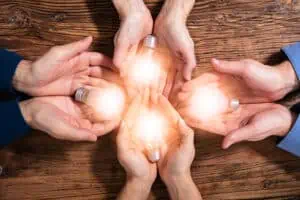
Inhalt
- What industrial property rights are there?
- How do you obtain protection?
- When does an infringement of your industrial property right occur?
- What claims are there in the event of an industrial property right infringement?
- How can you take action against a potential infringer?
- Conclusion
1. What industrial property rights are there?
Which industrial property right is suitable for you depends on the content of your idea. In addition to design forms and technical inventions, simple signs or sounds, for example, can also be protected as company trademarks. Here is an overview of the various industrial property rights and their special features:
a) Trademark
You can protect signs with a trademark. The purpose of a trademark is to assign goods and services to your company and to distinguish them from other companies. It is a sign of origin, quality and advertising. The consumer will always associate a certain quality or image with a trademark. You can take advantage of this to establish a strong position in the market.
Example: The company Telekom has developed a pink "T" logo and a jingle, which are established trademarks in the telecommunications sector.
Signs that are capable of distinguishing your goods and services from those of another company are eligible for protection. This is referred to as "distinctiveness". This can be denied if the sign is purely descriptive (e.g. the word "cell phone" cannot be registered as a trademark for cell phones). In addition to letters, sounds and words, protectable signs also include colors, images or three-dimensional designs (e.g. savings bank red, Steiff button in the ear of cuddly toys).
The protection of a trademark is limited geographically and in terms of content.
From a geographical point of view, you choose the country (e.g. Germany) or the group of countries (e.g. EU) in which your trademark is to enjoy protection. The geographical protection of your trademark is then limited to the respective country (e.g. the territory of the Federal Republic of Germany). If you choose a trademark in Germany, it is basically possible for a competitor to operate in another country (e.g. the Netherlands) under the same trademark.
In terms of content, you determine the goods or services for which your trademark is to enjoy protection when you register the trademark. For better comparability, a comprehensive and international classification of goods or services (the so-called Nice Classification) has been drawn up. This catalog is constantly being revised and is divided into a total of 45 classes (so-called Nice Classes). The classification determines the protection of your class.
Example: The Ford Motor Company has registered the Focus sign in class 12 for motor vehicles. However, the registration does not prevent Hubert Burda Media Verlag from publishing the news magazine of the same name.
A fee of EUR 290 is payable for the application for three classes of goods and/or services at the German Patent and Trade Mark Office. Each additional class of goods and/or services costs 100 euros. When applying for an EU trademark, the fees including 1 class start at 850 euros.
Protection begins from the date of filing the trademark application with the relevant office after entry in the trademark register. The term of protection is initially 10 years, but can be extended indefinitely.
b) Design and registered design
With a registered design, you can protect the shape, color and design of your products. At European level, this is also referred to as a Community design.
Example: Porsche has had the shape of the "Porsche Boxter" protected as a design.
All two- and three-dimensional external appearances of industrially or manually producible objects are eligible for protection. The appearance results from the lines, contours, colors, shape, surface structure and materials of the product itself or its ornamentation. This includes, for example, graphics, fashion, logos or product packaging.
Protection arises when the design is registered and entered in the design register.
It is important that your design must be new and unique at the time of application:
"Novelty" in this context means that no identical design may have been disclosed prior to the filing date of your design. A comparison is made between all previously disclosed designs (e.g. by uploading them to the Internet, attaching them to products, displaying them in shop windows) and yours. If the features are identical or differ only insignificantly from what is already known, your design is not new.
A design has "individual character" if the overall impression made on the informed observer differs from the overall impression made by all previously disclosed designs.
The scope of protection is determined by the application for registration. You should therefore ensure a detailed graphic and color representation in order to avoid any gaps in protection. The fee for an application in electronic form is 60 euros.
The term of protection is initially 5 years, but can be extended up to a total of 25 years.
c) Patent
You can protect your technical inventions or processes with a patent. The same applies to products and products based on your patented process.
Technical inventions are always eligible for protection if they
- are new worldwide,
- are based on an inventive step and
- are industrially applicable or practicable.
Simply put, a patent is the right industrial property right for you if you have a new idea that solves a technical problem and could be implemented by a skilled person.
This does not include, for example, purely scientific theories, mathematical methods or mere discoveries, but a person skilled in the art must not be able to deduce your invention from the "state of the art", otherwise the characteristics "new" and "inventive" are missing. The decisive factor here is what was disclosed to the public somehow, somewhere and at some time at the time of filing the application.
Example: Apple wanted to patent the bounce-back effect of the iPhone, which would have been possible in principle. However, Steve Jobs showed this mechanism to the audience during a demonstration of the iPhone and thus disclosed it before the patent was granted. Protection was therefore not possible because the technical invention was no longer new.
Protection arises as soon as the patent has been granted by the competent office and published in the patent gazette.
A fee of 40 euros is payable for the application in electronic form (for up to 10 patent claims). The request for examination (no patent will be granted without examination) costs 350 euros. Annual fees for an extension of the term of protection are added from the third year after the filing date. The term of protection can be applied for up to 20 years.
For the application, it is important that a comprehensive description of your invention is included (e.g. by means of sketches). A person skilled in the art must be able to understand and carry this out.
d) Utility model
The utility model is the "small" form of the patent and also protects technical inventions. The difference is that the Office does not examine whether the technical teaching applied for is new and inventive. For this reason, the applicant can obtain protection more quickly and cost-effectively. The application costs 40 euros, including a term of protection of 3 years.
2. How do you obtain protection?
Trade marks, patents and utility models as well as designs can only be protected after an application has been filed and entered in the register or granted by the competent office.
The German Patent and Trade Mark Office in Munich (DPMA) is responsible for national protection. At European and international level, responsibility lies with the European Union Intellectual Property Office (EUIPO) in Alicante and the International Bureau of the World Intellectual Property Organization (WIPO).
Please note: Only patent applications are examined by the DPMA. In the case of designs and utility models, however, the office only checks whether all formal criteria of the application have been met. Trade mark applications are also examined to determine whether there are any so-called absolute grounds for refusal, i.e. whether the trade mark can be protected at all or whether it is contrary to accepted principles of morality. It is not checked whether older identical trademarks already exist in the register. A comprehensive examination of protectability is only carried out if a third party believes that your property right infringes theirs.
It is therefore important that you carry out a thorough search before applying in order to rule out possible infringements of existing property rights. For example, you should check the relevant registers for trademarks and designs and keep an eye on the state of the art in the field in which you want to apply for a patent.
Legal advice is essential at this point!
We are happy to support you with our many years of experience in connection with industrial property rights. You can reach us at (040) 3501 6360 or info@kanzlei-bennek.de.
3. When does an infringement of your industrial property right occur?
The industrial property right gives you a kind of "monopoly right", i.e. only you may use it. At the same time, you can prohibit third parties from using it or allow them to use it by means of a license. If a third party uses your industrial property right without being asked, this is referred to as an infringement of industrial property rights.
Examples of infringements:
- Advertising a product using your trademark to exploit your image and suggest to consumers that it originates from you.
- The unsolicited production of a solvent based on your process.
- Applying your logo to products without permission.
- Imitating and selling your design furniture in a cheap form.
4. What claims are there in the event of an infringement of property rights?
You may be entitled to various claims following an infringement of your property right:
- With a claim for injunctive relief, you can obtain that the infringer ceases any behavior that impairs your property right and also refrains from doing so in the future.
- With a claim for damages, you can subsequently demand a license fee or claim the profit that the infringer has made by using your property right.
- With a claim for information, you can obtain information about sources of supply and details of products that infringe your property right.
- With a claim for destruction, you can prevent the circulation of infringing products.
5. How can you take action against a potential infringer?
If there is a potential infringement of your industrial property rights, you should act quickly. This is the only way to prevent damage to your image or loss of profit. There are various options available to you:
- Before you take legal action, you can and should send the potential infringer a request for authorization. This gives them the opportunity to state why they believe they are entitled to use your industrial property right.
- You can also issue a so-called warning letter. This will inform him of the potentially infringing act and at the same time give him the opportunity to put an end to it within a set period of time. To secure your claims, you will ask the potential infringer to submit a cease-and-desist declaration with a penalty clause (cease-and-desist declaration).
- If no solution is found in this way, you can take legal action and assert the above-mentioned claims.
- To prevent infringing products from crossing the border, you can submit a corresponding application to the customs authorities.
We support you in taking action against infringements of intellectual property rights.
Our law firm specializes in the protection of industrial property rights and can provide you with competent support. You can reach us at (040) 3501 6360 or info@kanzlei-bennek.de.
6. Conclusion
- Technical inventions, external designs and company logos can be protected by patents and utility models, designs and registered designs as well as trademarks.
- The resulting "monopoly rights" are called industrial property rights, which only you are entitled to use.
- In order to obtain protection, it is necessary to apply for and register or obtain a license from the relevant office.
- You can authorize third parties to use them by means of a license. Unauthorized use leads to an infringement of your property right.
- In the event of an infringement of property rights, you may be entitled to injunctive relief, compensation, information or destruction.
- You can submit a request for authorization to the potential infringer, issue a cease-and-desist declaration with a penalty clause or take legal action against the infringer.
Picture credits: © Andriy Popov | Pixabay
More articles on this topic:



